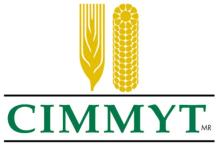Resource information
Four environments with contrasting potential for agricultural productivity and infrastructure development were identified in Guanajuato State, Mexico, to test hypotheses about the relationship of maize biological diversity to the region's potential for agricultural productivity and infrastructure development. Samples of all types of maize grown by a random sample of farmers were collected from each environment. The maize samples were classified by race, racial mixture or type of "creolized" or improved variety. Landraces were the dominant maize class in all four environments; the use of improved varieties was negligible. Several diversity indices were calculated, and no statistically significant differences were apparent between the environments with the most contrasting agroecological and infrastructural conditions. Statistical differences in diversity are apparent when the development of infrastructure interacts with agroecological factors in an environment. Qualitative data suggest that the richness of maize populations may be associated with maize yield potential in a geographical area, whereas the evenness of maize populations may be associated with the presence of infrastructure. These findings suggest further hypotheses about regional patterns of maize diversity.



